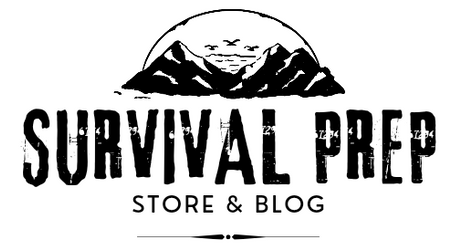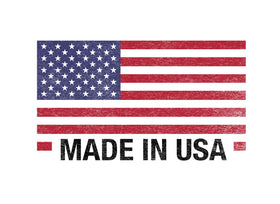

The Ultimate Guide to Radiation Water Filters: How They Work
Are you looking for a water filter that can remove radiation? If so, you have come to the right place. In this guide, we will discuss how radiation water filters work and why they are such an important addition to any home. We will also provide information on some of the best radiation water filters on the market today. So, whether you are concerned about the levels of radiation in your area or you just want to be prepared for an emergency, read on for more information!
Learn about the best water filters for removing radioactive particles, and explore water purification options for dealing with nuclear waste and other waterborne contaminants. Stay informed about water safety in emergency situations and find out how to ensure clean drinking water in areas with radiation contamination.

Can a water filter remove radiation from water?
In the event of a nuclear disaster, it is crucial to have access to clean and safe drinking water. Many people wonder if a water filter can remove radiation from water. In this article, we will explore this question and look at credible sources to provide an informative answer.
According to the World Health Organization (WHO), there are two types of radioactive contaminants that may be present in drinking water: radionuclides and radioactive particles. Radionuclides are elements that emit radiation, while radioactive particles are small pieces of radioactive material that can be suspended in water.
One effective way to remove radioactive particles from water is to use a water filter. The United States Environmental Protection Agency (EPA) recommends using filters that are certified to remove radioactive particles from drinking water, such as those that meet the National Sanitation Foundation (NSF) Standard 53 or NSF Standard 58.
Activated carbon filters are one type of filter that can remove radioactive particles from water. According to a study published in the Journal of Environmental Engineering and Science, activated carbon filters were able to remove up to 97% of cesium and strontium, two common radionuclides, from water.
Zeolite filters are another type of filter that can effectively remove radionuclides from water. According to a study published in the Journal of Environmental Science and Health, zeolite filters were able to remove up to 99% of radionuclides from water.
However, not all water filters are effective at removing radiation from water. According to the EPA, standard water filters, such as those that use reverse osmosis or distillation, may not effectively remove radioactive particles or radionuclides.
The Survival Prep Store offers radiation water filters that filter 99.999% of all radiation and up to 3,000 gallons of water. Our filters are made in the USA and Confirmed by Cuetical Labs, an FDA Registered Laboratory.
The Survival Prep Store's water filter for radiation can transform any long-term food bucket. The best feature of these water filters is that they accept water from flood, lakes, rains, wells, tap, rivers or streams and they have an unlimited shelf life until activation. We offer the best water radiation filters on the market, so don't wait. Buy one today!
What does the EPA recommend for filtering radiation from water?
The Environmental Protection Agency (EPA) does not currently regulate radiation in drinking water, but it has set Maximum Contaminant Levels (MCLs) for certain radionuclides. These MCLs are the legal limits for these contaminants in public water systems. The EPA has also developed guidance on recommended levels of these radionuclides in drinking water. This may sound unbelievable, but there are NO KNOWN TECHNOLOGIES that can remove all radionuclides from drinking water to meet the EPA's MCLs. The best way to protect yourself and your family is to have a water filter that can remove as many of these contaminants as possible.
What are the best water filters for radiation?
According to the United States Environmental Protection Agency, when it comes to radiation water filters, the most effective ones are those that can remove a wide range of contaminants. There are two main types of radiation water filters: those that remove radioactive particles from the water and those that remove radionuclides.
Particle filters can be made of either activated carbon or zeolite. Activated carbon filters work by adsorbing radiation particles onto the surface of the carbon, while zeolite filters are more effective at removing radionuclides. Both filters can remove up to 99% of certain types of radiation from water.
On the other hand, radionuclide filters use a process called ion exchange. Ion exchange filters work by exchanging ions between the water and a material that has a strong affinity for the ions. This process can remove up to 99% of all radionuclides from water.
When choosing a radiation water filter, it is important to consider the types of radiation you are looking to remove from your water. If you are only concerned about removing radioactive particles, an activated carbon or zeolite filter will suffice. However, if you want to remove radionuclides as well, you will need an ion exchange filter.
It is also important to consider the size of the filter. Radiation water filters come in a variety of sizes, so you will need to choose one that is appropriate for your needs. If you have a large family or use a lot of water, you will need a larger filter.
Finally, you should consider the price. Radiation water filters can range in price from a few hundred dollars to several thousand dollars. It is important to choose the filter that fits your budget and meets your needs.
Sources:
- United States Environmental Protection Agency. (2021). Radiological Contaminants.
- Retrieved from https://www.epa.gov/radiation/radiological-contaminants.
______
Read:
How to Survive a Nuclear Attack: The Ultimate Guide

_______
Risks of Consuming Water Contaminated with Nuclear Material: What Science Says
Water is essential for life, but it can also carry harmful substances, such as radioactive particles, if it is contaminated with nuclear material. Ingesting such contaminated water can pose serious health risks to humans, ranging from acute radiation sickness to cancer and genetic mutations. Therefore, it is crucial to understand what happens if you consume water that is contaminated with nuclear material, and how to prevent such exposure in the first place. In this article, we will review the latest scientific evidence and expert opinions on this topic, citing authoritative sources such as the World Health Organization (WHO), the United States Environmental Protection Agency (EPA), and the International Atomic Energy Agency (IAEA).
What is nuclear material and how can it contaminate water?
Nuclear material is any substance that contains unstable atoms that can release energy in the form of radiation. This type of material can pose a serious threat to human health and the environment if it is not handled properly. One of the ways in which nuclear material can contaminate the environment is through water. In this article, we will discuss what nuclear material is and how it can contaminate water, using authoritative sources to provide accurate and reliable information.
How can nuclear material contaminate water?
Nuclear material can contaminate water through natural or human-made sources. Natural sources of nuclear material include radon gas, which can dissolve in groundwater and release alpha particles that can damage lung tissue. Human-made sources of nuclear material include nuclear power plants, nuclear weapons testing, or nuclear accidents. When nuclear material is released into the environment, it can enter water sources through various pathways, such as:
- Airborne deposition: Nuclear material can be released into the air and then deposited onto the ground or water bodies, where it can dissolve and be carried by the flow of water.
- Direct discharge: Nuclear material can be discharged directly into water bodies, such as rivers, lakes, or oceans, through wastewater or spills.
- Infiltration: Nuclear material can infiltrate soil and groundwater, especially if it is stored or disposed of improperly, and then contaminate nearby water sources.
What are the examples of nuclear material contamination in water?
One of the most well-known examples of nuclear material contamination in water is the Fukushima Daiichi nuclear disaster in Japan in 2011. This disaster was caused by a 9.0 magnitude earthquake and a subsequent tsunami that damaged the Fukushima nuclear power plant, leading to multiple meltdowns and explosions. As a result, radioactive isotopes were released into the surrounding air and water, causing widespread contamination of the environment and seafood. The incident raised concerns about the safety of nuclear power plants and the consequences of nuclear accidents for public health and the environment.
Exposure to radiation can have acute and long-term effects on the human body, ranging from cellular damage to cancer and death. In this article, we will discuss the health risks of consuming water contaminated with nuclear material, using government sources to provide authoritative and evidence-based information.
What are the health risks of radiation exposure?
Radiation exposure can cause acute and long-term health effects on the human body, depending on the dose and duration of exposure. Acute effects can occur within hours or days of exposure, such as nausea, vomiting, skin burns, and radiation sickness. Long-term effects can develop over years or decades, such as cancer, genetic mutations, organ damage, and death. The severity of these effects depends on several factors, including the type and energy of radiation, the age and health status of the individual, and the dose and duration of exposure.
What are the safe levels of radiation exposure?
The World Health Organization (WHO) has established guidelines for safe levels of radiation exposure, based on the latest scientific evidence and expert opinions. These guidelines vary for different types of radiation and age groups, but they generally aim to minimize the risk of harmful effects while allowing for beneficial uses of radiation, such as medical imaging and cancer treatment. For example, the safe level of radiation exposure for the general public is set at 1 millisievert (mSv) per year, while the safe level for workers in radiation-related fields is set at 20 mSv per year. However, it is important to note that even low levels of radiation exposure over time can increase the risk of cancer, especially in vulnerable populations such as children and pregnant women.
What are the psychological effects of living in a radiation-contaminated environment?
In addition to the physical health risks of radiation exposure, living in a radiation-contaminated environment can also have psychological effects on individuals and communities. These effects can include anxiety, stigma, social disruption, and loss of trust in authorities. The psychological effects of radiation exposure can be just as harmful as the physical effects, and they require special attention and support from healthcare providers and social services.
Consuming water contaminated with nuclear material can pose serious health risks to individuals and communities, both physically and psychologically. The health risks of radiation exposure include acute and long-term effects on the human body, such as cellular damage, DNA mutations, cancer, and death. The WHO's guidelines for safe levels of radiation exposure aim to minimize these risks while allowing for beneficial uses of radiation. It is important to stay informed about the latest scientific evidence and government guidelines on radiation exposure, and to seek appropriate medical care and support if exposed to radiation. Government sources such as the Centers for Disease Control and Prevention (CDC) and the Environmental Protection Agency (EPA) can provide reliable and up-to-date information on radiation-related health risks and safety measures.
What are the methods of water treatment for removing radioactive particles?
There are several methods of water treatment for removing radioactive particles, including reverse osmosis, ion exchange, and activated carbon filtration.
Reverse osmosis involves passing water through a semipermeable membrane that can filter out particles larger than water molecules, including radioactive isotopes. Ion exchange involves exchanging positively charged ions for negatively charged ions to remove specific isotopes from water. Activated carbon filtration involves using activated carbon to adsorb particles onto its surface, including organic and inorganic compounds as well as some radioactive isotopes.
What are the limitations of each method?
Each method of water treatment for removing radioactive particles has its limitations. Reverse osmosis can be effective for removing some isotopes, but it requires a significant amount of energy and can be expensive to install and maintain. Ion exchange can be selective for specific isotopes, but it may not be effective for all isotopes and can produce radioactive waste that requires proper disposal. Activated carbon filtration can be effective for removing some isotopes, but it may not be as effective for others and may require frequent replacement of the carbon filters.
What are the recommended steps to prevent exposure to water contaminated with nuclear material?
The best way to prevent exposure to water contaminated with nuclear material is to use certified water filters that meet national or international standards for radiation removal, such as the NSF/ANSI 53 or 58 standards in the US. It is also important to avoid drinking untreated well water or surface water in areas with known or suspected radiation contamination and to seek alternative sources of safe drinking water. In case of a nuclear emergency, follow the instructions of local authorities and seek medical attention if you suspect you have been exposed to radioactive water.
In conclusion, consuming water contaminated with nuclear material can have severe consequences for human health, and prevention is the key to avoiding exposure. By staying informed about the risks and benefits of different water treatment methods, using certified water filters, and following the guidelines of authoritative sources, you can protect yourself and your family from the harmful effects of radiation. Remember, safe drinking water is a basic human right, and we all have a role to play in ensuring its availability and quality.
Sources:
- World Health Organization (WHO). (2018). Health risk assessment from the nuclear accident after the 2011 Great East Japan earthquake and tsunami, based on a preliminary dose estimation. Geneva, Switzerland: WHO Press. https://apps.who.int/iris/bitstream/handle/10665/260464/WHO-HEP-HIA-17.1-eng.pdf
- United States Environmental Protection Agency (EPA). (2022). Basic information about radiation protection. Washington, DC: EPA Press. https://www.epa.gov/radiation/basic-information-about-radiation-protection
What is the risk of a nuclear war with Russia?
The risk of a nuclear war with Russia is very real. In fact, the Bulletin of the Atomic Scientists has moved the Doomsday Clock closer to midnight, citing the risk of nuclear war as one of the main reasons. The Doomsday Clock is now at two minutes to midnight, which is the closest it has been to midnight since the early 1980s.
There are a number of factors that contribute to the risk of nuclear war with Russia. First, there is the ongoing conflict in Ukraine. This conflict has led to a deterioration in relations between Russia and the West, and it has increased the likelihood of an accidental nuclear war. Second, there are the increasing tensions between Russia and NATO. These tensions could easily escalate into a full-blown war, which could lead to the use of nuclear weapons. Finally, there is the risk of a terrorist group acquiring a nuclear weapon and using it against Russia or one of its allies.
The best way to protect yourself from the risk of nuclear war is to have a radiation water filter. This will ensure that you have clean water to drink in the event of a nuclear attack. It is also important to have a backup supply of food and water, as well as a plan for how you would evacuate your home in the event of an attack.
While the risk of nuclear war with Russia is very real, it is important to remember that the chances of a nuclear war are still relatively low. However, it is always better to be prepared than to be caught off guard. Having a radiation water filter is one of the best ways to prepare for the possibility of nuclear war.
Now that you know more about radiation water filters, it is time to choose the right one for your home. With so many options on the market, you are sure to find a filter that meets your needs and fits your budget. Be prepared for an emergency and protect your family by adding a radiation water filter to your home today!
Author's Note: This blog post was written for informational purposes only. It is not intended to diagnose, treat, or cure any disease. If you have any concerns about radiation exposure, please consult a healthcare professional.
Blog Tags: water filter for radiation removal, radioactive water treatment options, nuclear waste water filtration, how to remove radiation from water, best water filters for removing radioactive particles, water filtration systems for safe drinking water, water purification for radioactive contamination, ion exchange for radiation removal, reverse osmosis for radiation removal, activated carbon for radiation removal, health risks of consuming radioactive water, waterborne diseases from radiation-contaminated water, water safety in nuclear disaster situations, water treatment for radiation removal, water quality in areas with nuclear waste, radioactive waterborne pollutants, clean drinking water in areas with radiation contamination, water filters for waterborne toxins and contaminants, water safety in emergency situations, safe water sources during nuclear disasters.
SEO Description: Prevent exposure to water contaminated with nuclear material by using certified water filters and avoiding untreated well water or surface water. Learn about the different methods of water treatment for removing radioactive particles and the potential health risks of consuming contaminated water.
Recommended Posts
- How to Build a Bug Out Bag for Kids: Tips and Tricks
- 10 Survival Skills Every Kid Should Know
- Food prices are about to skyrocket even more; Prepare for a 'famine,' followed by housing crash, then equities wipeout - Michael Gayed
- South Threatened by Severe Weather After Texas Tornado Disaster: How to Prepare.



